DOI:
https://doi.org/10.38017/1657463X.592Palabras clave:
manzana, pera, micotoxinas, alternariaResumen
El género fúngico Alternaria contienez especies tanto saprofitas como patógenas. Como patógenos de las plantas, causan serios problemas en la agricultura, reduciendo el rendimiento del cultivo y deteriorando frutos en el almacenamiento. Las especies de este género también pueden ser micotoxicogénicas, capaces de colonizar los cultivos y acumular en los productos infectados, metabolitos secundarios que pueden afectar la salud humana y/o animal. En el presente trabajo, se muestrearon frutos de manzano (Malus domestica) y pera (Pyrus comunnis) en tres localidades del Alto Valle del río Negro (Cipolletti, General Roca y Villa Regina), a fin de determinar la presencia de especies del género Alternaria asociadas a estos cultivos en la región. Se obtuvieron un total de 267 aislamientos pertenecientes al género Alternaria. Los mismos fueron identificados por sus características morfológicas (Simmons, 2007) como iguales o similares a Alternaria tenuissima, en mayor proporción (85 %). También, fueron identificadas A. mali y A. gaisen, especies hospedador-específicas de manzana y pera, respectivamente. La importancia del presente estudio radica en que permite considerar el riesgo a la sanidad de los cultivos locales a causa de este pátogeno, y evaluar la posibilidad de la presencia de micotoxinas en frutos infectados, que pudiendo alcanzar la cadena de producción, sería un riesgo a la salud del consumidor.
Descargas
Citas
Andersen, B., Hansen, M. E., y Smedsgaard, J. (2005). Automated and unbiased image analysesas tools in phenotypic classification of small-spored Alternaria spp. Phytopathology, 95, 1021.
Andersen, B., y Frisvad, J. (2004). Natural occurrence of fungi and fungal metabolites in moldy tomatoes. Journal Agriculture Food Chemistry, 52, 7507-1320.
Andersen, B., Krøger, E., y Roberts, R. G. (2002). Chemical and morphological segregation of Alternaria arborescens, A. infectoria and A. tenuissima species-groups. Mycology Research, 106, 170-82.
Andersen, B., Kroger, E., y Roberts, R. G. (2001). Chemical and morphological segregation of Alternaria arborescens, A. infectoria and A. tenuissima species-groups. Mycological research, 106(2), 170-182.
Azevedo, S., Mariano, R.L., y Michereff, S.J. (2000). Survey of the intensity of black rot and Alternaria leaf spot of cabbage in Agreste of Pernambuco and determination of sample size for disease quantification. Summa Phytopathology, 26, 299-306.
Barkai-Golan, R. (2008). Alternaria mycotoxins. En Barkai- Golan R. y Nachman (Eds.), Mycotoxins in fruits and vegetables. San Diego; Academic Press.
Bottalico, A., y Logrieco A. (1992). Alternaria plant diseases in Mediterranean countries and associated mycotoxin. Amsterdam: Elsevier.
Bottalico, A., y Logrieco A. (1998). Toxigenic Alternaría species of economic importance. Sinha, K.K. and Bhatnagar In: Mycotoxins in agriculture and food safety pp.65- 108. New York, NY, USA. Maree Dekker, lnc.
Delgado T., Gómez-Cordovés C., Scott P.M. (1998). Determination of alternariol and alternariol monomethyl ether in apple juice using solid-phase extraction and highperformance liquid chromatography. Journal Chromatography. 731, 109–114.
Davis N.D., Diener U.L, and Morgan-Jones G. (1977). Tenuazonic acid production by Alternaria alternate and Alternaria tenuissima isolated from cotton. Applied and Environmental Microbiology. 34, 155-157.
Dickens J.S.W., Cook R. T.A. (1995).Alternaria pear black spot and apple blotch. Bulletin OEPP/ EPPO. 25: 651-659.
Fehr M., Pahlke G., Fritz J. and Marko D. (2007). Alternarlo lacts as a topoisomerase poison. Proceedings ofthe 29th mycotoxin workshop, 14-16 May. (123). Stuttgart- Fellbach, Germany. Gesellschaft für Mycotoxin Forschung (ed.).
Fernandez Pinto V., Patriarca A. (2017). Alternaria species and their Associated Mycotoxin. Antonio Moretti and Antonia Susca (eds.), Mycotoxigenic Fungi: Methods and Protocols, Methods in Molecular Biology, vol. 1542. Springer Science+Business Media.
Filtenborg O., Frisvad J. C., Thrane U. (1996). “Moulds in food spoilage.” Internacional Journal of Food Microbiology. 33 : 85–102.
Filtenborg O, Frisvad J.C, Samson R.A. (2002).”Specific association of fungi to foods andinfluence of physical environmental factors.” Samson R.A, Hoekstra E.S, Frisvad J.C., Filtenborg O. Introduction to Food and airborne fungi. Baarn Centraalbureau voor Schimmelcultures.
Grabarkiewicz-Szczesna and Chelkowski J. (1992). “Metabolites produce by Alternaria species and their natural occurrence in Poland.” J. Chelkowski and A. Visconti. Alternaria Biology, Plant Diseases and Metabolites. Elsevier, Amsterdam.
Gur, L., Reuveni, M., & Cohen, Y. (2016). Occurrence and etiology of Alternaria leaf blotch and fruit spot of apple caused by Alternaria alternata f. sp. mali on cv. Pink lady in Israel. European Journal of Plant Pathology, 147(3), 695–708.
Harteveld D.O.C., Akinsanmi O.A., Drenth A., (2013). “Multiple Alternaria species groups are associated with leaf blotch and fruit spot diseases of apple in Australia”. Plant Pathology. 62: 289-297.
Horlock C.M.(2006). “Management of Alternaria leaf and fruit spot in apples.” Horticulture Australia Limited. Sydney, Australia. New South Wales.
Jackson L.S. and Al-Taher F. (2008). “Factors affecting mycotoxin production in fruits.” Barkai-Golan R. and Paster N. Mycotoxins in fruits and vegetables. San Diego, CA, USA. Elsevier.
Jones A.L. and Aldwinckle H.S. (1990). “Compendium of apple and pear diseases”. APS Press.
Johnson R.D., Johnson L., Kohmoto K., Otani H., Lane C.R., Kodama M. (2000). “A polymerase chain reaction-based method to specifically detect Alternaria alternata apple pathotype (A. mali), the causal agent of Alternaria blotch of apple”. Phytopathology. 90: 973-976.
Kohmoto K., Taniguchi T. and Nishimura S. (1974). “Correlation between the susceptibility of apple cultivars to Alternaría mali and their sensitivity to AM-toxin l.” Annals of the Phytopathological Society of Japan. 43: 65-66
Kusaba M. and Tsuge T. (1994). “Nuclear ribosomal DNA variation and pathogenic specialization in Alternaria fungi known to produce host-specific toxins”. Applied and Environmental Microbiology. 60:3055–3062.
Logrieco A., Moretti A., Solfrizzo M. (2009). “Alternaria toxins and plant diseases: An overview of origin, occurrence and risks.” World Mycotoxin Journal. 2:129–40.18.
Mislivec P.B, Bruce V.R, Stack M.E, Bandler R. (1987). “Molds and tenuazonic acid in fresh tomatoes used for catsup production.” Journal Food Protection. 50:38–41.
Montemurro N. and Visconti A. (1992). “Alternaria metabolites Chemical and biological data”. Chełkowski J and Visconti A. Alternaria: biology, plant diseases and metabolites. Amsterdam Elsevier Eds.
Nelson P.E., Toussoun T.A., Marasas W.F.O. (1983). Fusarium species. An illustrated manual for identification. USA. Pennsylvania State University Press.
Ostry V. (2008). “Alternaria mycotoxins: An overview of chemical characterization, producers, toxicity, analysis and occurrence in foodstuffs.” World Mycotoxin Journal. 1: 175–88.24.
Pitt J.I., and Hocking A.D. (1997). Fungi and food spollage. London. Blanckie Academic and Professional.
Polizzotto R, Andersen B, Martini M, Grisan S, Assante G, Musetti R. (2012). “A polyphasic approach for the characterization of endophytic Alternaria strains isolated from grapevines.” Journal Microbiology Methods. 88:162–71.
Rotondo F., Collima M., Brunelli A., Pryor B.M. (2012). “Comparison of Alternaria sp. Collected in Italy from apple with A. mali and other AM-toxin producing strains.” Phytopathology. 120: 1130-1142.
Serdani M., Crous P.W., Holz G. and Petrini O. (1998). Endophytic fungi associated with core rot of apples in South Africa, with specific reference to Alternaria species. Sydowia. 50:257-271.
Serdani M., Kang J.C., Andersen B. and Crous P.W. (2002). Characterization of Alternaria species-groups associated with core rot of apples in South Africa. Mycological Research. 106: 561-569.
Shier, W. T., Abbas, H. K., & Mirocha, C. J. (1991). Toxicity of the mycotoxins fumonisins B1 and B2 and Alternaria alternata f. sp. lycopersici toxin (AAL) in cultured mammalian cells. Mycopathologia, 116(2), 97–104.
Strandberg J.O. (1992). “Alternaria species that attack vegetable crops: Biology and options for disease management.” Chelkowski J. and Visconti A. Altenaria Biology, Plant diseases and Metabolites. Elsevier. Amsterdam.
Solfrizzo M., De Girolamo A., Vitti C., Sconti A. and Van den Bulk R. (2004). “Liquid chromatography determination of Alternaría toxins in carrot.” Journal of AOAC lnternational. 87:101-106.
Steyn P.S. and Rabie C.J. (1976).“Characterization of magnesium and calcium tenuazonate from Phoma sorghína.” Phytochemistry. 15:1977-1979.
Schulz B., Boyle C., Draeger S., Römmert A., Krohn K. (2002). “Endophytic fungi: A source of novel biologically active secondary metabolites”. Mycological Research.106:996–1004.
Sun Zhang. (2008). “Morphological and molecular characterization of Alternaria isolates on fruITS of Pyrus bretschneideri Rehd. Ya Li”. Mycosystema. 27(1):105-117.
Terminiello L, Patriarca A, Pose G, Fernández Pinto V. (2006). “Occurrence of alternariol, alternariol monomethyl ether and tenuazonic acid in Argentinean tomato puree”. Mycotoxin Research. 22:236–40.
Thomma B. (2003). “Alternaria sp. From general saprophyte to specific parasite.” Molecular plant pathology. 4:225-236
Wollenhaupt K., Schneider F. and Tiemann U. (2008). “ Influence of alternariol (AOH) on regulator proteins of cap-dependent translation in porcine endometrial cells.” Toxicology Letters. 182: 57-62.
Wu G., Wang Y., Wang P., Wang J., Gong B. (1999). “Study on the differentiation and biological characteristics of Alternaria alternata f. sp. Mali”. China Fruits. 11-15.
Xu L Du L. (2006). “Direct detection and quantification of Alternaria alternate toxins using high-performance liquid chromatography-evaporative light-scattering detection.” Microbiology Methods. 64:398-405.
Yekeler H., Bitrnis K., Ózcelik N., Doyrnaz M.Z. and Calta M. (2001). “Analysis of taxi effects of Alternaría toxins on oe.sophagus of mice by light and electron rnicroscopy.” Toxicologic Pathology. 29:492-497.
Yoon J.T., Lee J.T., Park S.D., Park D.O. (1989). “Effects of meteorological factors on the occurrence of Alternaria leaf blotch caused by Alternaria alternata f.sp. mali.” Korean Journal Plant Pathology. 5, 312-316.





